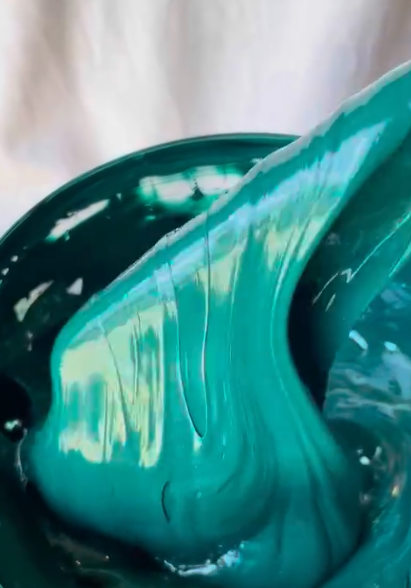¡El mercado en crecimiento de la tinta plastisol ecológica!
¡Hola a todos! Hoy vamos a hablar de tinta plastisol ecológicaEste tipo de tinta ¡Es cada vez más popular! Porque todos queremos cosas que sean mejores para el medio ambiente.
¿Qué es la tinta plastisol?
Tinta plastisol es un tipo de tinta usado para impresiónViene en muchos colores y se puede imprimir en la ropa. Pero, más antiguo... tintas plastisol Tenían algunas cosas malas. Ahora, con tinta plastisol ecológica¡Es mucho mejor!
- No tiene químicos dañinos.
- Es mejor para la Tierra.
- También es más seguro de usar.

¿Por qué la tinta plastisol ecológica se está volviendo cada vez más popular?
Hay varias razones:
- La gente quiere productos ecológicos: Mucha gente quiere comprar cosas que sean buenas para el medio ambiente. Por eso, la ropa estampada con tinta ecológica son más populares.
- Las empresas quieren ser verdes: Muchas grandes empresas quieren ser más respetuosas con el medio ambiente. Utilizando tinta ecológica puede ayudarlos.
- Requisitos legales: Algunos lugares tienen leyes que exigen el uso de ecológico materiales. Entonces, usando tinta ecológica También es una necesidad.
¿Qué nuevos cambios están ocurriendo en el mercado?
- Nuevos materiales: Algunas empresas están empezando a utilizar nuevos materiales para fabricar tintaEstos materiales provienen de plantas y son más ecológicos.
- Reciclaje: Algunas empresas están empezando a recoger usados tinta y convertirlo en nuevo tinta. De esta manera no se desperdicia nada.
- Competencia de la impresión digital: La impresión digital también está mejorando. Pero, plastisol ecológico Sigue siendo muy útil en algunas áreas.
- Más certificaciones: Ahora hay muchas certificaciones que lo demuestran. tinta es ecológico.
¿Qué oportunidades existen?
- Mercado asiático: Asia tiene muchas fábricas textiles y necesitan tinta ecológica.
- Usos especiales: Tinta ecológica Se puede utilizar en ropa deportiva y suministros médicos.
- Colaboración: Las empresas pueden trabajar con organizaciones ambientales para investigar nuevas tinta.
- Informar a la gente: Las empresas necesitan decirle a la gente que sus tinta es ecológico. De esta manera la gente querrá comprarlo.
¿Qué problemas existen?
- Preocupaciones de calidad: A algunas personas les preocupa que tinta ecológica No es tan bueno como el anterior tinta.
- Preocupaciones sobre el precio: Tinta ecológica Podría ser un poco más caro.
- Diferentes leyes: Los diferentes lugares tienen diferentes requisitos para tinta ecológica.
- Productos ecológicos falsos: Algunas empresas podrían decir que sus tinta es ecológico, pero en realidad no es cierto.
¿Qué pasará en el futuro?
El mercado de tinta ecológica seguirá creciendo. Para 2030, es probable que muchas empresas utilicen tinta ecológica.
- La tecnología mejorará: Tinta será más fácil de usar y más respetuoso con el medio ambiente.
- Las políticas cambiarán: Es posible que existan más leyes que obliguen a todos a utilizar tinta ecológica.
Resumen
El mercado de tinta plastisol ecológica está creciendo. Porque todos queremos cosas que sean mejores para el medio ambiente. Si empiezas a usar tinta ecológica ¡Ahora puedes mejorar en el futuro! Si quieres saber más, haga clic aquí Para saber más sobre tinta plastisol ecológicaDescubre más sobre los beneficios de las tintas ecológicas.quiero ver Nuestra colección de tintas ecológicas?
Preguntas frecuentes
- Es tinta plastisol ecológica Tan bueno como el viejo tinta?
- ¿Qué industrias utilizan? tinta ecológica ¿el mas?
- ¿Cómo pueden las pequeñas empresas permitirse el uso de tinta ecológica?

Tabla de datos
| Artículo | Datos/Hallazgos | Fuente | Importancia |
|---|---|---|---|
| Tamaño del mercado en 2023 | $1.2 mil millones | Investigación de Grand View [^1] | Línea base para analizar el potencial de crecimiento |
| Tasa de crecimiento anual compuesta (TCAC) proyectada (2023-2030) | 9.8% | Statista | Indica una rápida adopción en textiles y embalajes. |
| Factor clave del crecimiento | 68% de las marcas ahora priorizan materiales de embalaje sostenibles | McKinsey & Company (encuesta de 2024) | Enlaces a los compromisos ESG corporativos |
| Impacto regulatorio | El Reglamento REACH de la UE prohíbe 12 sustancias químicas en el plastisol (lo que afecta al 38% de las formulaciones tradicionales) | Agencia Europea de Sustancias y Mezclas Químicas (ECHA) [^2] | Forzará la reformulación de la industria |
| Comparación de costos | El eco-plastisol cuesta entre 15 y 201 TP4T más, pero reduce los gastos de tratamiento de aguas residuales en 301 TP4T | Estudio de caso: Proyecto piloto 2024 de Sun Chemical | Aborda las preocupaciones sobre el ROI de las empresas |
| Mercado regional superior | Asia-Pacífico tiene una participación de mercado de 42% (impulsada por las exportaciones textiles de la India) | Grupo IMARC (2025) | Guía las estrategias de expansión geográfica |
| Foco de innovación | El plastificante de base biológica de BASF reduce las emisiones de COV en un 90% | Informe de Sostenibilidad de BASF 2024 [^3] | Demuestra viabilidad tecnológica |
| Sentimiento del consumidor | 74% de los compradores de la Generación Z pagan una prima por prendas con etiqueta ecológica | Encuesta de Sostenibilidad Global de NielsenIQ (2025) | Valida la demanda del mercado |
| Estudio de caso: Patagonia | Reducción de las emisiones de la cadena de suministro en 18% al cambiar a plastisol sin ftalatos | Informe de Impacto de Patagonia 2024 | Demuestra escalabilidad para las marcas. |
| Eficiencia del reciclaje | Los nuevos sistemas de circuito cerrado recuperan 85% de residuos de tinta (frente a 45% con los métodos tradicionales) | Proyecto piloto de la Fundación Ellen MacArthur con Siegwerk Inks | Destaca las oportunidades de la economía circular |
| Tasa de adopción de las PYME | Solo el 22% de las pequeñas impresoras utilizan eco-plastisol debido a los altos costos iniciales | Censo mundial de impresión de FESPA (2024) | Identifica un segmento de mercado desatendido |
| Impacto de la tecnología emergente | Las tintas formuladas con IA reducen el tiempo de I+D en un 40% (DIC Corporation, 2025) | Comunicado de prensa de DIC Corporation | Revela ganancias de eficiencia en el desarrollo de productos |
¡Esperamos que este artículo te sea útil!



